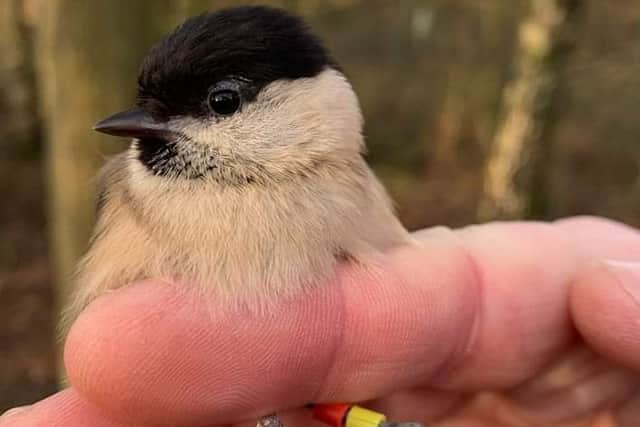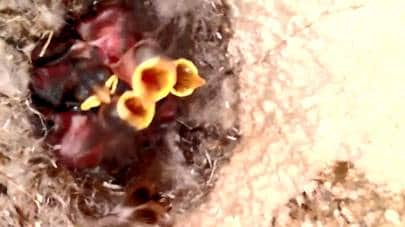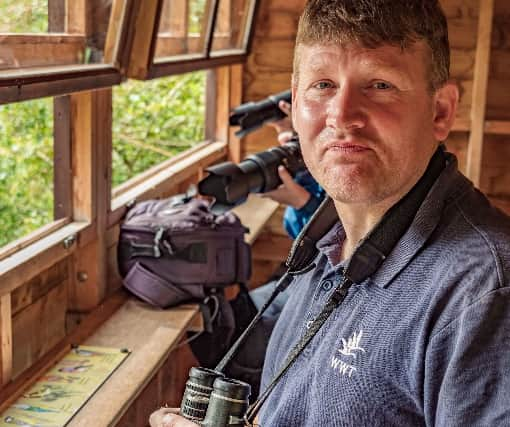Washington Wetland Centre celebrates successful fledging of UK's fastest declining red listed bird
and live on Freeview channel 276
Staff at Washington Wetland Centre are celebrating after the successful fledging of seven red listed willow tit chicks - the fastest declining resident bird species in the UK.
The endangered bird is already extinct across much of southern England with breeding pairs plummeting by 85% since 1995.
Advertisement
Hide AdAdvertisement
Hide AdThe fledglings are the offspring of an adult pair who were ringed on the centre’s woodland reserve last winter as part of a ‘species recovery project’ to boost the population of the endangered bird.
Wardens on the 100-acre site had been tracking the movements of the male and female as they explored potential nesting spots in early spring, and were delighted when they finally began excavating an old tree stump.
The team quickly set up a camera at the nesting chamber and were rewarded with footage of eight willow tit eggs in the nest – seven of which went on to hatch and fledge.


Reserve warden Andrew Diamond, who was part of the team working on the project, said: “We managed to ring three adult willow tit last winter during a public ringing session, which was part of our ongoing willow tit conservation project.
Advertisement
Hide AdAdvertisement
Hide Ad“Two of those birds were then captured together by our trail cameras checking out potential nesting sites.
“From the eight eggs laid, seven successfully hatched and they all went on to fledge after seventeen days of being looked after by mam.”


The reason for the rapid decline in the willow tit population is due to habitat loss, nest hole competition from other birds, such as blue tits, and increased nest predation from the great-spotted woodpecker.
To help tackle the first two issues, the Washington Wetland Centre enlisted the help of a willing band of volunteers to create suitable nest boxes.
Advertisement
Hide AdAdvertisement
Hide AdThe project was led by Emily Chubb who said: “It has been really exciting to get involved with the willow tit project.
“A big part of this has been building the willow tit boxes and throughout the winter we would spend our Sundays in the workshop alongside our hard-working volunteering group, allowing us to learn as we go.
“Using knowledge about areas that are preferable to willow tits, as well as our own sightings, we put out many of our boxes in strategic places across site.
“These were then checked and monitored with camera traps, and seeing some interest from willow tits in the boxes we built over the following months was very rewarding for both me and the volunteers.”
Advertisement
Hide AdAdvertisement
Hide AdPart of the recovery project has also involved volunteers monitoring and reporting willow tit sightings both at the centre and the surrounding area to help create an overall picture of the species’s population.


Andrew said: “Before the project began, we already knew we had a small population of willow tit here on the reserve and we manage our wet woodlands and other habitats to encourage them to stay.
“But now, thanks to our visitors and members supplying us with sightings data – as well as the wider project team’s help with monitoring and analysing camera footage – we’re starting to build a much better picture of that population and have been able to identify some key willow tit hot spots on site.
“Closely observing the willow tits going about their business through the breeding season has given us some invaluable knowledge that we can use going forward whilst developing willow tit habitat.”
Comment Guidelines
National World encourages reader discussion on our stories. User feedback, insights and back-and-forth exchanges add a rich layer of context to reporting. Please review our Community Guidelines before commenting.